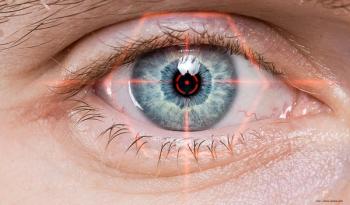
A real-world study of an AI system for enhanced detection of diabetic retinopathy
Fundus images of diabetic retinopathy were assessed by general ophthalmologists, retina specialists and the Aireen artificial intelligence system
Researchers from the Czech Republic led by first author Martin Sín, MD, PhD, FEBO, reported that an artificial intelligence (AI) system from Aireen exhibited greater sensitivity and specificity for screening diabetic retinopathy (DR) compared with telemedicine evaluations.1 Dr Sín is from the Department of Ophthalmology, Military University Hospital Prague, 1st Faculty of Medicine, Charles University, Prague. Dr Sín is on the advisory board for Aireen, a company based in Prague, Czech Republic
“Detecting cases requiring timely ophthalmic examination and treatment to prevent permanent visual loss is vital for screening for DR, as early treatment leads to improved outcomes.2 Nonetheless, numerous countries lack adequate resources for nationwide screening programmes. AI systems using digital fundus photography instruments have been developed for DR screening to partially address the increased demand for screening related to a burgeoning population with diabetes in the world. The advantages of AI screening systems include the convenience of point-of-care access and the potentially lower operating cost as a result of automatic interpretation of the images and appropriate referral to an eye care specialist,” the authors commented.
Dr Sín and his colleagues conducted a multicentre, cross-sectional, non-randomised diagnostic study to compare the results obtained by general ophthalmologists, retina specialists and the Aireen AI screening system with a three-member, high-level, expert committee in the evaluation of fundus images for DR.
The study included a cohort of 1,274 patients with diabetes mellitus type I or II. Each patient underwent one-field fundus photography using a non-mydriatic camera to assess findings of DR; 119 subjects (9.3%) were excluded from the clinical investigation based on Aireen system assessment because of inadequate imaging. All images were assessed at three independent levels of evaluation: general ophthalmologists without subspecialty training in retina, retina specialists and the Aireen system. In cases for which there were disagreements amongst groups, the image was referred for assessment by the Diabetic Retinopathy Board (DRB), the authors described.
Detecting DR
The investigators reported that the overall prevalence of any DR was 31.9% in 368 of 1,154 cases of diabetes, according to the DRB. The overall agreement between the AI system Aireen and the general ophthalmologists and retina specialists for detecting DR from fundus photography was 63.6% (734 cases) and the percentage of disagreements was 36.4% (420 cases).
The analysis showed that the sensitivity values for the general ophthalmologists were 87.0% (95% confidence interval [CI]: 83.6; 90.4), for the retina specialists 82.9% (95% CI: 79.1; 86.7), and for the AI system Aireen 92.1% (95% CI: 89.3; 94.9). The respective specificity values were 76.5% (95% CI: 73.5; 79.5), 81.2% (95% CI: 78.5; 83.9), and 90.7% (95% CI: 88.7; 92.7).
Dr Sín and colleagues concluded, “This study underscores the significant potential of the Aireen AI screening system in the detection of DR by comparing the performance of general ophthalmologists, retina specialists, and the Aireen AI system against a clinical reference standard provided by a DRB. The findings suggest that the Aireen AI system can effectively enhance DR screening processes, offering a reliable and efficient alternative to traditional methods. Its integration into clinical practice could lead to improved screening accuracy, potentially benefiting a larger population of patients with diabetes through earlier and more precise detection of DR. This study supports the continued development and implementation of AI technologies in ophthalmology to advance patient care and screening efficiency.”
References
1. Sín M, Renata Ženíšková R, Slíva M, et al. Comparison of the Aireen system with telemedicine evaluation by an ophthalmologist – a real-world study. Clin Ophthalmol. 2025;19:957-964. doi:10.2147/OPTH.S511233
2. Flaxel CJ, Adelman RA, Bailey ST, et al. Diabetic retinopathy preferred practice pattern®. Ophthalmology. 2020;127:P66–P145. doi:10.1016/j. ophtha.2019.09.025 6. V
Newsletter
Get the essential updates shaping the future of pharma manufacturing and compliance—subscribe today to Pharmaceutical Technology and never miss a breakthrough.











































